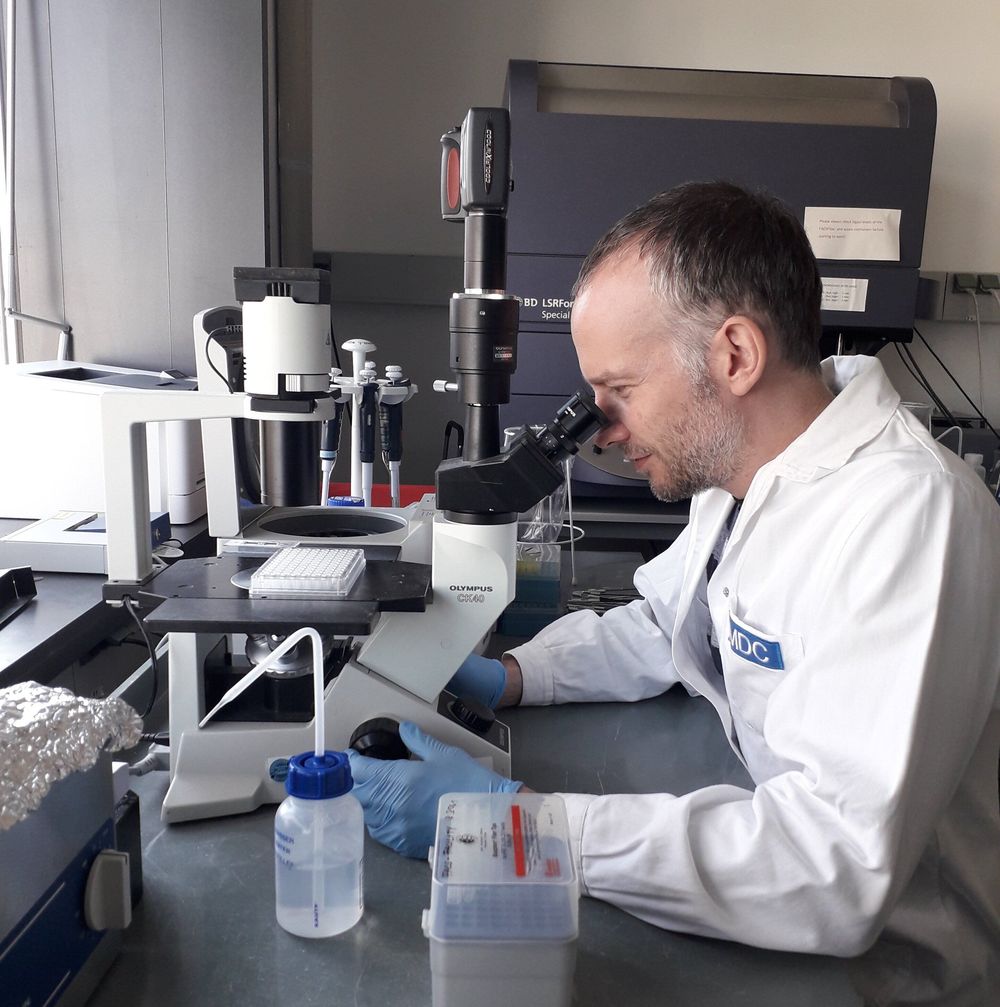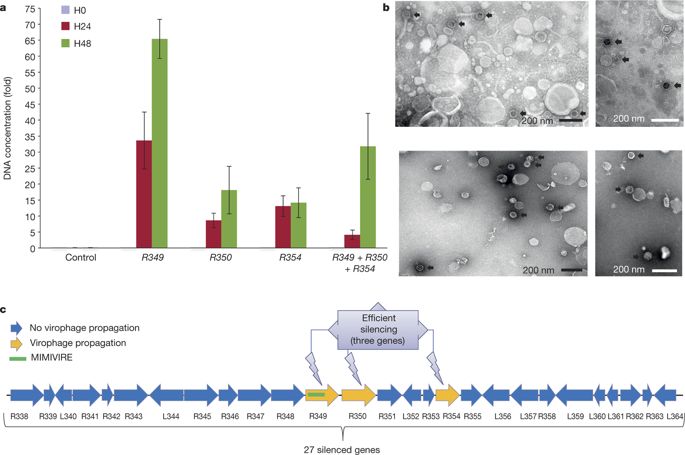WTI, the US benchmark, finished at -$37.63 a barrel on Monday. Producers are paying stockpilers to take barrels off their hands, as the coronavirus crisis saps demand and producers run out of places to store excess crude.


Salamanders and lizards can regrow limbs. Certain worms and other creatures can generate just about any lost part — including a head — and the latest genetics research on body part regeneration is encouraging.
Since they are adult stem cells that have reverted back to a less developed — more pluripotent — state, iPSCs remind scientists of the stem cells that enable lizards to regrow limbs, and zebrafish to regrow hearts. When it comes to limbs, the understanding the regrowth process could help scientists promote nerve regeneration in cases when a limb is severely damaged, but not physically lost. Nerves of the human peripheral nervous system do have the ability to regrow, but whether this actually happens depends on the extent of the injury, so understanding the stem cell physiology in zebrafish and other animals could help clinicians fill the gap. The knowledge gained also could impact development of treatments aimed at promoting nerve regrowth in the central nervous system, for instance in the spinal cord after an injury.
Caveats
Even where regeneration is natural for humans, numerous regeneration cycles can put a person at greater risk of cancer. In the liver, for instance, disease can result in liver cancer largely because the organ produces new cells to replace the damaged ones. This is what happens in cirrhosis and after certain viral conditions when there are periods when regeneration overtakes liver deterioration. Prometheus avoided this fate, but we don’t know how well the process would work in humans, if a regenerative system based on iPSCs or some other types of stem cell is used clinically on a large scale. Regenerative medicine is promising and exciting to hear about. But we are at a very early stage, and reports on limb regrowth should be taken with caution.

Your phone’s GPS, the Wi-Fi in your house and communications on aircraft are all powered by radio-frequency, or RF, waves, which carry information from a transmitter at one point to a sensor at another. The sensors interpret this information in different ways. For example, a GPS sensor uses the angle at which it receives an RF wave to determine its own relative location. The more precisely it can measure the angle, the more accurately it can determine location.
In a new paper published in Physical Review Letters, University of Arizona engineering and optical sciences researchers, in collaboration with engineers from General Dynamics Mission Systems, demonstrate how a combination of two techniques—radio frequency photonics sensing and quantum metrology—can give sensor networks a previously unheard-of level of precision. The work involves transferring information from electrons to photons, then using quantum entanglement to increase the photons’ sensing capabilities.
“This quantum sensing paradigm could create opportunities to improve GPS systems, astronomy laboratories and biomedical imaging capabilities,” said Zheshen Zhang, assistant professor of materials science and engineering and optical sciences, and principal investigator of the university’s Quantum Information and Materials Group. “It could be used to improve the performance of any application that requires a network of sensors.”

A team of scientists led by the University of Michigan Rogel Cancer Center and Case Comprehensive Cancer Center has identified the binding site where drug compounds could activate a key braking mechanism against the runaway growth of many types of cancer.
The discovery marks a critical step toward developing a potential new class of anti–cancer drugs that enhance the activity of a prevalent family of tumor suppressor proteins, the authors say.
The findings, which appear in the leading life sciences journal Cell, are less a story of what than how.

Multiple sclerosis (MS) is known as “the disease with a thousand faces” because symptoms and progression can vary dramatically from patient to patient. But every MS patient has one thing in common: Cells of their body’s own immune system migrate to the brain, where they destroy the myelin sheath—the protective outer layer of the nerve fibers. As a result, an electrical short circuit occurs, preventing the nerve signals from being transmitted properly.
Many MS medications impair immune memory
Researchers don’t yet know exactly which immune cells are involved in stripping away the myelin sheath. Autoreactive T and B cells, which wrongly identify the myelin sheath as a foreign body, travel to the brain and initiate the disease. “Up until now, MS drugs have essentially targeted these T and B cells, both of which are part of the acquired immune system,” says Dr. Alexander Mildner, a scientist at the Max Delbrück Center for Molecular Medicine in the Helmholtz Association (MDC) and the senior author of the paper now published in Nature Immunology.
:oooo.
Doctors and researchers are just beginning to document and understand the effects of heart disease in complicating and endangering recovery from the COVID-19 virus, as well as the potential impact of COVID-19 on the heart. In a new Loyola Medicine video, “Heart Disease and COVID-19,” cardiologist Asim Babar, MD, recommends that individuals with heart disease take especially good care of their health and heart during this pandemic.

#Hackers are seeking to exploit the roll-out of government financial relief plans to fill their own pockets at the expense of businesses and affected workers, Israeli cyber researchers have revealed.
Hackers are exploiting the rollout of governmental financial relief to fill their pockets at the expense of businesses and affected workers, according to Israeli cyber researchers.
In recent weeks, governments have sought to ease cash-flow shortages and avoid a recession with ambitious stimulus packages and grants to households, including a massive $2 trillion economic package in the United States.
According to researchers at Israeli cybersecurity giant Check Point, a major increase in malicious and suspicious domains related to relief packages has been registered in recent weeks. The hackers aim to scam individuals into providing personal information, thereby stealing money or committing fraud.
“To do this, they are evolving the scam and phishing techniques that they have been using successfully since the start of the pandemic in January,” the researchers wrote in a recent report.
Democratic Kentucky Governor Andy Beshear announced Sunday that the state had set a grim record with 273 new confirmed cases of the coronavirus, the highest single-day rise to date. Kentucky’s increase in infected individuals comes after protesters took to the streets throughout the week to call for the state to be reopened.
With the 273 additional confirmed infections, Kentucky now has 2,960 cases of the novel virus and 1,122 recoveries. Beshear also announced four new deaths on Sunday, bringing the total number of fatalities across the state to 148.
“We are still in the midst of this fight against a deadly and highly contagious virus,” the governor said during his daily news conference. “Let’s make sure, as much as we’re looking at those benchmarks and we’re looking at the future, that we are acting in the present and we are doing the things that it takes to protect one another.”
#JustWatch #Enjoy

👽 Giant Viruses : “Mimiviruses”
(Jan 2016)
Fyodor R., issue 3, refund institute
Biologist Didier Raoult is one of the leading experts in Microbiology, he is all over TV right now in France, providing leadership during this Covid outbreak of 2020.
👽 What are they?
Mimiviruses are so large that they are visible under a light microscope. Around half a micrometre across, and first found infecting amoebae living in a water tower, they boast genomes that are larger than those of some bacteria. They are distantly related to viruses that include smallpox, but unlike most viruses, they have genes to make amino acids, DNA letters and complex proteins.
Gigantic mimiviruses fend off invaders using defences similar to the CRISPR system deployed by bacteria and other microorganisms, French researchers report. They say that the discovery of a working immune system in a mimivirus bolsters their claim that the giant virus represents a new branch in the tree of life.